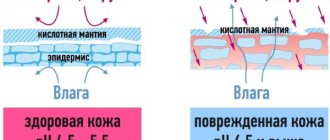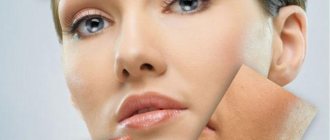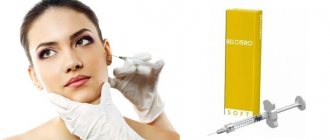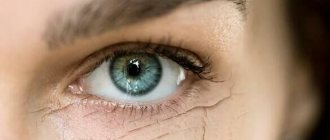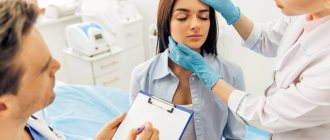What is Strawberry Tongue and Spanked Cheek Syndrome? Why is measles called the first disease and scarlet fever the second? Why does common roseola scare parents so much? In honor of Children's Day, we are talking about childhood infections.
Any medical student knows about the six primary exanthems. These are infectious diseases with similar manifestations: they always begin with fever and are accompanied by skin rashes, which are also called exanthemas. Mostly children suffer from them - usually mildly, but some infections from this list can be dangerous, while others, although harmless, often make parents nervous. This is the famous classic six.
First: measles
Measles, which practicing pediatricians have not encountered for a long time, is now on everyone’s lips – the outbreak of the first disease has spread to one and a half dozen European countries, and the incidence is growing in Russia. Measles is not as mild a disease as is commonly believed. It is unpleasant to suffer from it even in childhood, but adults, due to the peculiarities of the immune system, tolerate it difficultly. In addition, it is dangerous due to complications that can develop in anyone: measles pneumonia, purulent otitis, laryngeal stenosis, bronchitis, damage to the kidneys, liver and brain. The consequences of measles can be deafness or blindness, and people still die from it.
Typical symptom: Belsky-Filatov-Koplik spots - a semolina-like white rash surrounded by a red border. They appear on the buccal mucosa about a day before the measles rash.
Prevention and treatment
: There is no cure for measles; the most reliable prevention of infection is two-time vaccination.
Why can't you remove milia yourself?
It is impossible to simply squeeze out milia: they do not have a passage connecting the contents of the cyst with the surface of the skin. Therefore, these retention cysts can be removed only if they are punctured: make a puncture just above the very tip of the cyst and remove the keratin-sebaceous mass through it. Such harsh impact can injure the basement membrane - the boundary between the epidermis and dermis, and as a result, a scar is formed.
Eliminating whiteheads on your own can lead to infection: bacteria enter the cavity along with the tip of the needle. The person begins to squeeze the punctured milia and, when he releases it, the negative pressure sucks the trapped bacteria even deeper. So they can even get into the blood, infecting it.
Thus, complications of independent attempts to remove milia are:
- folliculitis;
- abscess at the site of milium;
- carbuncle;
- lymphadenitis;
- lymphangitis;
- sepsis.
Second: scarlet fever
All Soviet schoolchildren knew about the existence of this disease - from the gloomy poem by Eduard Bagritsky “The Death of a Pioneer”, the heroine of which was dying in the hospital. In the 30s of the last century, when this work was written, scarlet fever was one of the most severe childhood infections. Nowadays, it is incomparably easier - experts attribute this both to an improvement in the quality of life of children and to the availability of antibiotics.
Scarlet fever is caused by group A hemolytic streptococcus. It is similar to a sore throat, but is manifested not only by high fever, general malaise and sore throat, but also by a small rash, which usually appears on the cheeks, on the crooks of the arms and legs, and under the armpits a day after the onset of the disease. , on the sides of the body. Scarlet fever is a very contagious disease; according to sanitary standards, it is subject to control: having made such a diagnosis, the doctor must inform the epidemic surveillance authority. After recovery, quarantine is established for up to 12 days.
Typical symptom: strawberry tongue - the surface of the tongue is scarlet, dotted with white dots.
Prevention and treatment
: hemolytic streptococcus is transmitted by airborne droplets, the risk of infection is reduced by personal hygiene - hand washing, wet cleaning, etc. Scarlet fever is treated with antibiotics.
Third: rubella
Considering the high contagiousness of rubella and the fact that the patient begins to secrete the virus long before the first symptoms appear, it is easy to get sick with it if you are not vaccinated. Rubella often occurs very mildly, sometimes only with a rash, or even asymptomatic. Sometimes, when there are no rashes, it is mistaken for a mild ARVI. However, the patient is still contagious.
The main danger of rubella is for pregnant women: infection during pregnancy can lead to miscarriage or severe pathologies in the fetus. The risk is higher the shorter the pregnancy, which is why a blood test for rubella antibodies and, if negative, subsequent vaccination are included in the preparation plan for conception. Children are vaccinated against rubella at the same time as measles - at 12 months and 6 years.
Typical symptoms: enlarged cervical lymph nodes before the appearance of a rash, red dots on the palate - the so-called Forxheimer's spots. The rash itself is smooth to the touch, similar to drops of paint. It appears first on the face and behind the ears, then on other areas of the skin.
Prevention and treatment
: There is a vaccine for rubella, but there is no specific treatment.
Whiteheads on the eyelids - special caution
The eyelids are areas with very thin skin, but at the same time having a very large number of blood vessels. Since a whitehead can be removed at home only after piercing and further strong mechanical impact, this will almost always be complicated by the appearance of ecchymoses (bruises) and bruises. In some cases, this may cause swelling of the eyelid. And if you do not calculate the force of inserting the needle, you can pierce the eyelid right through and injure the eyeball.
At home, it is very easy to introduce an infection into the eyelid area. Due to the abundant blood supply, bacteria spread over a large area and become the cause of eyelid abscess, a disease that requires quite a long treatment in the eye surgery department.
The greatest danger of self-squeezing milia is due to the peculiarity of the blood supply to the eyelids. Veins extend from them, having a direct connection with the venous sinuses - peculiar veins in the cranial cavity. These sinuses represent the spaces between the layers of the dura mater; they communicate with each other. Bacteria that enter the eyelid area can very easily enter the ophthalmic veins, and through them into the sinuses of the brain. This is how sinus thrombosis occurs.
Bacterial accumulations often “settle” in several sinuses, and can be carried into the veins of the brain - in those places where they flow into the sinuses. This can lead to the spread of infection to the pia mater, that is, to meningitis. And if the purulent thrombus melts and can break away from the sinus wall, then it can begin to move through the bloodstream. This can cause a lung abscess.
The spread of bacteria through the bloodstream can lead to sepsis, which, in turn, can lead to serious damage to one or more internal organs.
Therefore, removing milia on your eyelids yourself is very, very dangerous. You need to get rid of these cystic formations in the clinic, having undergone treatment from a competent and experienced specialist.
Fourth: mononucleosis
Previously, the fourth was Filatov-Dukes disease - scarlet fever rubella. It was described as a mild form of scarlet fever - with a low fever, swollen lymph nodes and a similar rash that went away on its own and did not cause complications. Subsequently, it ceased to be considered an independent disease.
Now the fourth disease is called infectious mononucleosis, although it is not always accompanied by a rash. The symptoms of this disease, caused by the Epstein-Barr virus, are very diverse - it usually manifests itself as fever, sore throat, enlarged liver, general malaise, but joint pain, headaches, herpes on the skin, etc. can also occur. The rash with mononucleosis is similar to red spots are irregular in shape and occur in about 25 percent of cases. There is another type of rash characteristic of this disease: if the patient takes antibiotics prescribed by mistake or “just in case,” a so-called ampicillin rash may develop. It, unlike the usual one, not associated with antibiotics, can itch - including at night, causing severe discomfort.
Typical symptoms: prolonged fever, inflammation of the tonsils, significant enlargement of the lymph nodes, ampicillin rash.
Prevention and treatment
: personal hygiene - the Epstein-Barr virus is very common and is easily transmitted through airborne droplets and household contact (mononucleosis is also called the kissing disease). The disease is treated with antiviral and symptomatic drugs.
How to care for skin with closed comedones
Skin care for comedones necessarily includes professional removal and accompanying home care.
The correction scheme includes 3 stages that allow you to eliminate the problem forever.
Mechanical skin cleaning
A widely known and not always popular procedure. In the case of white comedones, it is irreplaceable.
- Resorption or dissolution of closed comedones with external means is impossible. Only mechanical intervention can remove existing blockages.
- The disadvantage of this method is that the effect is temporary. New elements will appear later, because... the skin functions as before.
What should you do: constantly extract closed comedones using a needle?
No, the procedure is carried out at least once a month until the white comedones completely disappear, which is only possible with concomitant external therapy aimed at normalizing sebum production and exfoliating dead cells.
Daily skin care
The drugs of choice for closed comedones are retinoids.
Retinoids are a well-studied group of substances derived from vitamin A, used in dermatology to treat problem skin with acne, and in cosmetology to correct age-related changes and hyperpigmentation. ⠀
How retinoids work:
- They penetrate the hair follicle and exfoliate the sebaceous gland duct. Naturally influence the processes of keratinization and exfoliation of skin cells - eliminate hyperkeratosis. Thus, the outflow of the pore contents is ensured.
- They reduce the activity of sebocytes, reducing the production of sebum and reduce the density of sebum, facilitating its secretion.
- They relieve the inflammatory reaction around the gland (remove the pink halo around closed comedones), preventing further development of the process into inflamed acne.
In accordance with the Federal Clinical Guidelines for the Management of Patients with Acne, 2015, retinoids are the first-line drugs for acne correction, including the initial stages.
Benefits of Retinoids
Why else are retinoids attractive in terms of choice for eliminating white comedones:
- physiological – they are a substance familiar to the skin, because the body itself supplies vitamin A to the skin in low concentrations;
- do not have a toxic effect;
- penetrate well into the skin, reaching the necessary layers;
FAQ (frequently asked question) Can retinol be recommended in the summer?
Previously, there was an opinion that retinol should not be used in the summer. It has now been proven that retinol does not increase skin photosensitivity!
Yes, retinol thins the stratum corneum, eliminating stratum corneum, but at the same time, by stimulating cell division, it thickens the epidermis as a whole.
Summary: The sun is not a contraindication for the use of retinol.
It is recommended to use preparations containing 0.3 - 0.5% retinol, or more gentle forms. This allows you to use retinoids regularly, every evening, without getting confused in complex application regimens. And without provoking skin irritation and peeling.
Example:
Renewing cream with Retinaldehyde DermaQuest is a godsend for daily saturation of the skin with retinoids without unwanted consequences.
Benefits of the cream:
Contains a new form of retinol – retinaldehyde at a concentration of 0.05%;
The composition is enhanced with a Vitamin A simulator - Bakuchiol - increasing the effectiveness of retinaldehyde;
Contains antioxidants and moisturizing complexes - powerful prevention of inflammation and irritation of the skin, preservation of its barriers;
The difference between retinaldehyde and retinol:
- 10 times more active than retinol!
- does not cause retinoic dermatitis
- used daily
- stable to oxidation
- comfort and safety of use for sensitive skin
Application:
Apply the cream daily in the evening to clean skin.
Another type of product that is mandatory for use for closed comedones is Sunscreen with SPF based on mineral photo filters.
The sun's rays activate the sebaceous glands, which increases the number of blockages. The choice should be made in favor of physical photo filters - a mineral screen.
Chemical photo filters are contraindicated. Their operating principle is based on converting the energy of UV rays into heat, which additionally activates the work of the sebaceous glands.
Example:
Mineral cream SPF 30 with zinc DermaQuest based on micronized zinc oxide 18.6% is a universal sunscreen for all family members!
- Does not penetrate deep into the skin and does not cause blockages
- Safe and hypoallergenic
- Blocks up to 97% of sun rays
- In 2021, the composition is enriched with BlueLight filters against blue light
The advantages of modern creams with SPF are not only photoprotection, but complete care products that do not require the application of additional creams in the morning.
Fifth: erythema infectiosum
Fifth disease, parvovirus, and slapped cheek disease are all erythema infectiosum infections that are very common among children. It begins with fever, headache and runny nose, but differs from acute respiratory infections by rashes on the cheeks, and then on the body. The rash goes away slowly, sometimes itches, and becomes brighter, for example, in the heat. The fifth disease, which is caused by parvovirus B19, is mild and without consequences. However, there are two categories of people for whom this infection can be dangerous - pregnant women, especially in the early stages, and patients with anemia, in particular sickle cell. If they become infected with parvovirus, they need to see a doctor.
Typical symptoms: in children - spanked cheek syndrome (bright red skin on the cheeks), in adults - joint pain. The rash on the body looks like lace.
Prevention and treatment
: personal hygiene, treatment is usually not required.
PMS pimples
Sharp rashes on the face before menstruation do not depend on the general state of health and can appear in the life of every woman. Their occurrence is associated with hormonal processes occurring at this moment in the body. Usually these are a couple of pimples, which soon, with proper care, disappear without a trace. What you definitely shouldn’t do is squeeze, burn, or otherwise try to get rid of acne. Talk to your esthetician about how to properly care for your skin before your period begins.
Sixth: roseola
This disease is very frightening for parents, and doctors do not always recognize it, which leads to unnecessary prescription of antibiotics. The child suddenly develops a high temperature, which is difficult to reduce with antipyretics. There are no other symptoms - no cough, no runny nose, no pain of any kind.
In fact, there is nothing dangerous about roseola. It develops when a child becomes infected with herpes virus type 6. This happens so often that by the age of 5, almost all children have had roseola. You can only transfer it once in your life.
A typical symptom: after exactly 3 days the temperature sharply returns to normal (hence the other name for roseola - infantile three-day fever) and another day later a rash appears.
Prevention and treatment
: not required - roseola is not dangerous and goes away on its own.
How to recognize scarlet fever and why “stars” on the skin are alarming
Of course, the list of infections that can be accompanied by rashes is not exhausted by these six diseases. It is quite large - it includes chickenpox, and enterovirus infection, and yersiniosis, and herpes zoster, and many others. Unfortunately, among such infections there are also very dangerous ones, in which delay can lead to serious consequences and death. How not to miss such situations, what to pay special attention to, when a rash is an alarming symptom, in what cases laboratory tests are needed, says pediatrician Elena Nikiforova, medical expert at the LabQuest personalized medicine laboratory.
In what cases do you need to get tested?
– As a rule, these diseases are diagnosed clinically, because there is a typical picture of the disease. This applies to measles, rubella, roseola, and erythema infectiosum, in which the rash appears at a certain point and in stages. In case of measles, the diagnosis is subsequently confirmed in the infectious diseases department - this disease is not treated at home. For rubella, the doctor may prescribe general blood and urine tests if there is a suspicion that a bacterial infection has occurred.
For scarlet fever, the diagnosis is a test for group A streptococcus. There are home tests that help differentiate the pathogen on the spot; a swab is taken from the throat in the laboratory. You need to take the test promptly, at the first symptoms, before starting treatment and even using symptomatic remedies - throat spray, lozenges, etc. If the result is positive, and the child has a fever, red throat, plaque on the tonsils, an antibiotic is prescribed.
Nowadays, blood tests are widely prescribed for antibodies to the Epstein-Barr virus, which causes mononucleosis. And often treatment is prescribed even if IgG antibodies are detected, which indicate a previous infection and developed immunity. Mononucleosis is treated only in the acute period - this can be determined using a blood test for type M antibodies (IgM).
Treatment of milia at the ROSH clinic
The Roche Clinic is distinguished by a comprehensive approach to the treatment of milia. This gives us the opportunity to guarantee that if you follow all our recommendations, you will not only get rid of these whiteheads, but you will not have them in the future.
Treatment for milia at the Roche Clinic begins with a blood test called a lipid profile. It allows the doctor to find out about the current state of fat (lipid) metabolism. Based on the lipid profile, the specialist gives recommendations on how to correct fat metabolism: he describes which foods and medications will normalize the content of cholesterol and individual fatty acids.
Next, the ROSH clinic conducts:
- Pore drainage These are procedures that involve creating favorable conditions for the timely cleansing of skin pores. They allow you to remove excess sebum from the skin, waste epidermal cells - that is, all those substances that become the contents of the milia.
- Detox programs are procedures that allow you to cleanse the skin of toxins and cellular waste products that slow down skin metabolism and lead to the closing of pores.
- Mechanical removal of milia. It is performed by experienced specialists under strictly sterile (aseptic) conditions.
- Medical programs of world dermatologists to normalize the self-cleaning of pores and sebum secretion. They effectively prevent further formation of milia.
After completing a course of recommended procedures, ROSH clinic specialists describe the necessary home care. These are simple procedures that you can perform yourself to prevent the appearance of milia in the future.
When is fever and rash a reason to call an ambulance?
– There is a principle that doctors adhere to and that parents should take note: any fever and rash is a reason to immediately call an ambulance. First of all, this is necessary to diagnose meningococcemia. Meningococcal infection affects the membranes of the brain. Very rarely this happens with lightning speed; with meningitis, you have at least a day to diagnose this disease and begin to treat it. Meningococcemia develops when the infection begins to affect the walls of blood vessels, it actively multiplies, a toxin is released into the blood, and sepsis develops. This is a fulminant disease in which a child can die in literally a matter of hours. The rash in this case is specific - it resembles hemorrhagic “stars”. If a child has an elevated body temperature and there are at least one or two such elements on the skin, this is a reason to immediately call an ambulance or take him to the infectious diseases department of the nearest hospital.
A hemorrhagic rash can also appear with a disease such as idiopathic thrombocytopenia. This is an autoimmune disease that can develop against the background of any infectious process. The patient's level of platelets in the blood drops and a characteristic rash may appear, usually on the legs or abdomen. Idiopathic thrombocytopenia can be life-threatening, so if you notice a purple rash, spots, or small bruises on the skin, you should consult a doctor.
Causes of whiteheads
Milia can sometimes appear in newborns - when the sebaceous glands, formed in the 3rd month of intrauterine life, begin to actively function. Over time, when the activity of these skin glands decreases, whiteheads disappear spontaneously.
The second peak in the appearance of milia occurs in adolescence, during the period of hormonal changes in the body, during which the amount of sebum increases. Milia occur if the process of its elimination is disrupted.
In adults, milia can appear at any age. Their reasons are:
- seborrhea – increased secretion of the sebaceous glands;
- hyperandrogenism (increased amount of male hormones);
- hormonal imbalance (in adolescence, during menopause, with endocrine disorders and diseases);
- disruption of the autonomic nervous system,
- hypersensitivity of sebaceous gland receptors to hormonal stimulation;
- imbalance of fatty acids in the secretion of the sebaceous glands due to poor nutrition (excessive consumption of fatty, cholesterol-rich, smoked or spicy foods);
- disruption of the gallbladder and bile ducts;
- skin injury;
- taking medications that dry the skin;
- skin diseases: pemphigoid, cutaneous porphyria, epidermolysis bullosa, tuberculous lupus;
- use of low-quality decorative cosmetics.
Depending on the predominant causes, milia are:
- Primary: occur suddenly, located mainly on the face. For their occurrence there must be either a genetic predisposition or a special skin condition;
- Secondary: they are signs of certain skin diseases and occur when the skin surface is injured. Most often, secondary milia occur in young women.
